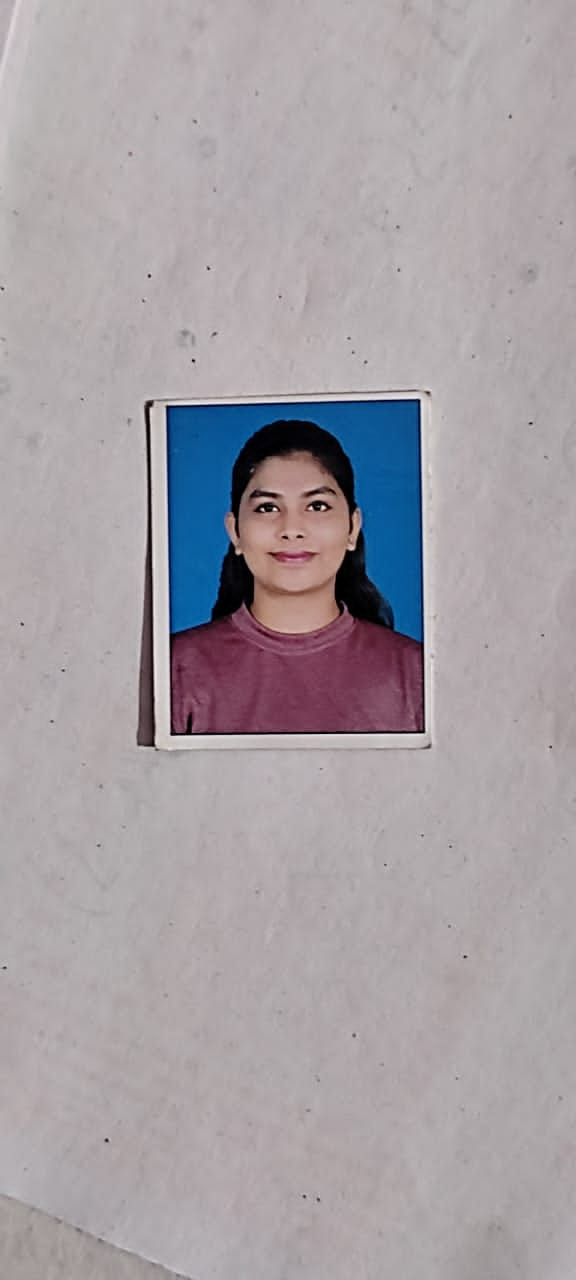Abstract
The oral route remains the most preferred and convenient method of drug administration due to its simplicity, patient compliance, and flexibility in dosage design. Among oral dosage forms, tablets constitute over 90% of marketed formulations, highlighting their dominance in drug delivery systems. Recent advancements in formulation science have focused on modifying conventional tablets to improve therapeutic efficacy, patient adherence, and controlled drug release. Sustained release matrix tablets are one such innovation that maintains steady plasma drug concentrations for prolonged periods, reducing dosing frequency and side effects. These formulations are developed using hydrophilic, hydrophobic, lipid, or biodegradable polymers that regulate drug diffusion and erosion mechanisms. Matrix tablets can be prepared by various techniques such as wet granulation, dry granulation, and sintering. Several physiological, biological, polymer-related, and formulation variables influence their drug release behavior. Sustained release systems offer significant advantages including improved patient compliance, minimized plasma concentration fluctuations, reduced total dose, and enhanced therapeutic efficacy. However, challenges such as high production cost, potential dose dumping, and poor in vivo–in vitro correlation persist. Continued research on novel polymers and optimized formulation strategies is essential to overcome these limitations and improve the reliability of sustained release matrix tablets for effective controlled drug delivery.
Keywords
Sustained release, Matrix tablets, Polymers, Controlled drug delivery, Oral dosage forms, Bioavailability
Introduction
The oral route is one of the most popular drug delivery systems due to its ease of administration, patient compliance, minimum sterility limitations, and customizable dosage form design (Indian Pharmacopeia).
Tablets: More than 90% of today's formulations are taken orally. This demonstrates that this formulation class is the most widely used globally and that researchers are primarily focused on this area. New and more effective tablet dosage forms are being developed as a result of changes made to traditional tablets to improve acceptability and bioavailability due to advancements in technology and increased awareness. The primary motivations behind the creation of various tablet types are to provide a dosage form that is convenient from the patient's point of view, develop a delivery system that is reasonably easy and inexpensive to manufacture, and employ a strategy that is unlikely to complicate the regulatory approval process. Tablets are categorized here according to the type of drug delivery mechanism they represent within the route of administration in order to better comprehend each dose form.
An overview of tablet kinds and classes
Oral Tablet Administration: These pills should be taken whole, together with a suitable quantity of drinkable water. Oral dispersible pills and chewable tablets are an exception. Common compressed pills Tablets such as different compressed tablets, compression coated tablets, multilayer tablets, modified released tablets, etc. are included in this class.
Tablets used in the oral cavity: The tablets in this category form aerosols to either disperse the active pharmaceutical ingredient or produce local action in the oral cavity. These medications have an immediate start of action, avoid first-pass metabolism, disintegrate into the stomach environment, and induce nausea. The tablets made for this area are made to fit in the proper portion of the mouth. Lozenges, troches, sublingual tablets, buccal tablets, dental eones, oral dispersible medications, and more fall under this group of products.
Tablets provided via other routes: By administering these tablets through a process apart from the oral cavity, the medications are kept out of the gastrointestinal tract. To absorb into the systemic circulation from the application site, these tablets can be placed directly behind the skin or implanted into several organ cavities. Tablets, vaginal tablets, implants, etc. fall within the scope of this category.
Tablets used to produce solution: Before being taken out or utilized, the tablets in this category need to be dissolved in water or another type of solvent. Depending on the type of prescription used, this solution may be administered topically, ingested, or administered parenterally. Tablets in this class include hypodermic or effervescent tablets, along with others.
2. Matrix Tablet Classification Depending on the retardant materials utilized:[3]
2.1 Matrices that are hydrophilic
One or more medications are appropriately incorporated into a matrix (gelling agent) using a hydrophilic polymer. Water-loving polymer matrices are commonly employed in oral controlled drug delivery because they are affordable, widely accepted by authorities, and effective in creating the appropriate drug release profile. Based on the polymer ingredients used, these matrices are separated into three main categories [3, 10].
Cellulose derivatives: include HPMC 25, 100, 4000, and 15000 cps, sodium carboxymethyl cellulose, and methylcellulose (400 and 4000 cps).
Non-cellulose natural or semi-synthetic polymers include agar-agar, carob gum, alginates, polysaccharides (mannose and galactose), chitosan, and modified starches.
Carbopol-934 is the most often used acrylic acid polymer in the category.
Other hydrophilic materials utilized in matrix tablets include alginic acid, gelatine, and natural gums.
Hydrophobic matrices: are plastic tablets that compress the active drug into a porous structure.
Inert or hydrophobic matrices include polyethylene, polyvinyl chloride, ethyl cellulose, and acrylate polymers copolymer. [3,11]
Lipid matrix: is formed by mixing lipid waxes and related substances. These materials promote drug release through erosion and pore diffusion. Carnauba wax, coupled with stearyl alcohol or stearic acid, has been employed as a retardant in continuous-release formulations for many years [3, 12].
Biodegradable polymers: are composed of monomers linked by functional groups with unstable backbones. Natural polymers consist of proteins, polysaccharides, modified polymers, and synthetic polymers such aliphatic esters and polyanhydrides.[3,13].
2.2 According to the porosity of the matrix
Macropores system: Medicines in macro-porous systems diffuse via holes ranging from 0.1 to 1 μm.
Microporous system: Diffusion in this system occurs mostly through pores. Microporous systems feature pores ranging from 50 to 200 A°, which are somewhat larger than diffusion molecules [3, 14].
Non-Porus System: Nonporous systems lack pores.
Molecular diffusion occurs between network meshes.
The presence of the polymeric phase eliminates the pore phase.
3.Sustained release tablet polymers
Both hydrophilic and hydrophobic polymers are commonly utilized for matrix system preparation.
a) Polymers that are hydrophilic
Xanthan gum, sodium alginate, hydroxyl ethyl cellulose (HEC), hydroxyl propyl cellulose (HPC), hydroxyl propyl methyl cellulose (HPMC), and cross-linked homopolymers and co-polymers of acrylic acid22–24
b) Polymers that are hydrophobic
Waxes and water-insoluble polymers usually appear in their formulation25.
c) Xanthan gum, guar gum, sodium alginate, pectin, and chitosan25 are examples of natural polymers.
d) Polymers that disintegrate organically
Polylactic acid (PLA), polycaprolactone (PCL), polyglycolic acid (PGA), polyanhydrides, and polyorthoesters26.
e) Polymers that do not biodegrade
Cellulose acetate (CA), ethyl cellulose (EC), polyethylene vinyl acetate (PVA), polyether urethane (PEU), polyvinyl chloride (PVC), and polydimethylsiloxane (PDS)27.
4. Matrix Tablet Formulation Process [19, 20, 21]
4.1 Method of Wet Granulation
To generate a binder combination, the excipients are chopped up and gravitationally mixed with the medication and polymer.
Granulating or binder solutions are added during wet massing.
Damp materials undergo filtering, dry granules are screened, and wet grains are dried.
Journal of Biology, Vol. 4, Issue 4 | ISSN: 3008-6280 | © 2024 | World BIOLOGICA 53.
Making a disintegrating powder by dissolving and mixing with an emollient
The tablet was compressed.
4.2 The Method of Dry Granulation
Excipient grinding and gravity stirring for polymers and medications
Roll or slug compaction Compressed powders and slugs are ground and screened.
After the lubricant is combined and crushed, the tablet dissolves
4.3 Sintering Method
Sintering is the process of particle surfaces merging in order to produce a powdery mass.
Traditionally, sintering involves heating solid materials to a low temperature. Sintering has been demonstrated to impact tablet disintegration and hardness at high temperatures. Sintering creates extended-release matrix tablets that delay the release of drugs.
5. Factors affecting sustained-release tablets.
5.1 Physiological Factors
1. Maximum dosage for sustained release formulations: 0.5-1g. Compounds with large dosage quantities can be delivered in multiple doses or added to liquid systems.[7,22].
2. Ionization (pKa) and water solubility Drugs are often weak acids or bases that must remain unchanged to enter lipid membranes.
Therefore, the pKa of the drug is critical.
Drug solubility in wet conditions affects delivery mechanisms such as diffusion or dissolution.[7,23]
3. Partition coefficient: Medicines must flow across biological membranes to deliver therapeutic effects. Lipophilic medicines have a high partition coefficient, making them difficult to dissolve in water and delayed absorption into tissues. Delivering drugs with low partition coefficients and limited bioavailability through lipid membranes is problematic. The drug's partitioning qualities affect the selection of diffusion-limiting membranes.[7,24]
4. Consistency: Drugs administered orally undergo both hydrolysis and enzymatic breakdown. Low bioavailability arises when unstable chemicals are administered in sustained dose forms in the small intestine [7, 25].
5.2 Biological factors
5. Absorption: The medicine must be absorbed more quickly than it is released. If a drug travels to a specific portion of the gut or is absorbed by active transport, sustained release preparation may be harmful [7,26].
6. The Metabolism: The drug's bioavailability is decreased by the metabolism that takes place before absorption. There is less drug metabolism before absorption, and medication release happens more slowly [7, 8].
7. Biological half-life: To be suitable for sustained release, A must have a brief half-life.[7, 27]
8. Safety margin: Medications with a high therapeutic index are suitable for continuous release formulations [7,27]
5.3 Polymer-related factors
9. Type of polymer: The type of polymer utilized has a significant impact on the drug's release from the matrix. Water-soluble and water-insoluble polymers are the two kinds of polymers utilized to make prolonged release matrices.[28, 29]
10. Grade of polymer viscosity: The mechanical and diffusional characteristics of the gel layer are influenced by the viscosity of the polymer selected at a fixed polymer level, which governs the matrix's performance. After hydration, higher viscosity grade polymers rapidly form a mechanically stable gel layer. Fast-hydrating polymers offer rapid gel formation, limiting initial dosage dumping from a matrix and extending the release time.[28, 30, 31]
11. Polymer percentage: The drug release profile can be changed by varying the amount of polymers in the matrix system. Longer diffusion routes result from the gel layer becoming more viscous as the polymer content rises. Reduced release may result from lowering a drug's diffusion coefficient.[28, 32]
12. Characteristics of polymer particles: It was found that smaller particles had longer lag times and a weaker burst effect.
As previously mentioned, the faster swelling of smaller particles led to the rapid establishment of the gel barrier.[28, 33]
13. Polymer blend: A combination of polymers may synergistically postpone drug release from matrix tablets. This synergism may result from the molecular physical contact between the individual polymers.[28, 34]
Inventum Biologicum, 2024, Vol. 4, Issue 4 | ISSN: 3008-6280 | © 2024 | World BIOLOGICA 54
5.4 Formulation-related factors
14. Formulation geometry (Tablet size and shape):
The size and shape of a tablet that is intended to be a matrix system with both erosional and diffusional release can have an impact on the rate of drug dissolution. Tablet matrices should be made as spherical as feasible in order to obtain the lowest release rate for a particular tablet shape.[28, 35]
15. Variables in the process: Metoprolol tartrate was reportedly released more quickly from formulations made using the direct compression approach than from formulations made using the fluid-bed and high-shear granulation procedures. Increasing the compression force has a significant impact on the tablets' thickness and hardness.[28, 32]
16. Additives for Formulation: Preformulation studies of possible interactions between excipients in the solid dosage forms are necessary because these interactions may affect the drug's release and bioavailability.Soluble fillers speed up the dissolving of soluble medications by reducing the diffusional path length, while insoluble fillers slow down the rate of diffusion by blocking the tablet's surface pores.[28, 36]
5.Sustained Release Matrix Tablets' Benefits
i) Adherence to medication
While the effectiveness of medication treatment is dependent upon the capacity of the patient to collaborate with the medication's treatment, noncompliance is most frequently seen with chronic illnesses which require long-term treatment. Many factors impact patient compliance, includes understanding of a specific treatment plan, confidence in treatment, and knowledge of the ailment process. The difficulty of planning therapy, the financial burden of medication, and the amount given form's local or systemic adverse reactions. A sustained release drug delivery gadget may assist to address such an issue in certain ways (10–14).
ii) Minimized "see-saw" movement
When an antibiotic gets administered in an ordinary dose form, the concentration of the drug in the tissue compartments and systemic circulation often exhibits a "see saw" pattern. Drug kinetics, especially the rate of absorption, distribution, elimination, and dose intervals, are mostly responsible for the sizes of these variations15. Since recommended dose intervals are rarely shorter than four hours, the "see-saw" pattern is more noticeable only for medications with biological half-lives less than four hours. In addition to ensuring an unchanged medication concentration in blood circulation and target tissue cells, a well-designed sustained release drug delivery system may considerably reduce the frequency of drug administering 16.
iii) Total dose reduction
To treat an ailing condition less measure of aggregate drug is used in Sustained release drug delivery systems. By reducing the total amount of drug, decrease in systemic or local side effects are observed. This would also lead to greater economy17.
iv). Improvement of deficiency in treatment
Ideal treatment of a disease requires an effective transfer of active drugs to the tissues, organs that need treatment. Very often doses far in excess to those required in the cells have to be administered in order to achieve the necessary therapeutically effective concentration. This unfortunately may lead to undesirable, toxicological and immunological effects in non-target tissue. A sustained release dosage form leads to better management of the acute or chronic disease condition18.
v). The economy
Because of the unique nature of these substances, the initial unit cost of sustained release medications is usually higher than that of standard dosage forms; however, the average cost of treatment over an extended period of time may be lower19.
6.Sustained release matrix tablet drawbacks
Very expensive. inadequate systemic accessibility.
More patient education and counselling is required. Dumping 20 doses.
In vivo-in vitro correlation is frequently poor21
CONCLUSION
Sustained release matrix tablets have proven to be an effective approach for achieving controlled and prolonged drug delivery through the oral route. By incorporating suitable polymers, these formulations maintain steady plasma drug levels, enhance bioavailability, reduce dosing frequency, and improve patient compliance. The choice of polymer type, concentration, and manufacturing method significantly influences drug release behavior. Despite challenges such as high production cost, potential dose dumping, and limited in vivo–in vitro correlation, sustained release matrix tablets continue to offer promising advantages over conventional dosage forms. Continued research into novel polymers and formulation strategies will further enhance their safety, efficacy, and reliability in modern drug delivery systems.
RESULT
The study indicates that sustained release matrix tablets effectively control the rate and duration of drug release by using different types of polymers such as hydrophilic, hydrophobic, lipid, and biodegradable materials. The results demonstrate that increasing polymer concentration, viscosity, and blending of polymers significantly prolongs drug release and ensures uniform plasma drug levels. Formulation factors such as tablet geometry, compression force, and excipient selection also influence the dissolution rate. Overall, optimized sustained release matrix tablets provide consistent drug release, reduced dosing frequency, and improved therapeutic efficacy compared to conventional immediate-release tablets.
REFERENCES
- Amit Dubey ,Kusum Kumari ,Lubna Shaheen, Manish Kumar, Mo Rayyan, Mohammad Saklain, Mohad Aarif Khan, “Formulation and Evaluation of Paracetamol Matrix Tablet Using Natural Polymer”,IJSRT,20252(5)
- Rajesh R, Navya V, Kumar SK. Importance of Drug Excipient Compatibility Studies by Using or Utilizing Or Employing Various Analytical Techniques-An Overview. IJPSR. 2022;13(9):3473-3485.
- Azimuddin A, Roslan MF, Widodo RT. Formulation and in vitro Evaluations of Low Dose Paracetamol Orally Disintegrating Tablets. J. Food Pharm Sci.2023;11(1):780- 787
- Poreddy SR, Penjuri SCB, Damineni S, Vuppula S. Formulationand evaluation of colon targeted matrix tablet using natural tree gums. Int J Pharm Pharm Sci 2018; 10:92-7.
- Rao N.G Raghuvendra, Prasana Raj and Nayak B. Sanjeev, “ Review on Matrix Tablet as Sustained Release”, IJPRAS, 2013; 2(3): 1-17.
- Gupta PK and Robinson JR, “Oral controlled release delivery”, Treatise on controlled drug delivery, 1992; 93(2): 545
- Kumar V, Prajapati SK, Soni GC, Singh M, Kumar N. Sustained release matrix Type drug delivery system: a review. World J Pharm Pharma Sci , 2012; 1:934-60
- Abhitul Pachori, Aparna Joshi, Kapil Kumar, Ikram, Vaishali RajputA Comprehensive Review On Sustained Release Tablets ,Journal of Integral Sciences [JIS] ;ISSN: 2581-5679
- Alsaifi A, Ali A. Quality assessment of different brands of Paracetamol tablets in Yemeni market. Universal Journal of Pharmaceutical Research 2018; 3(4): 39-43.
- Goyal S et al., Oral sustained release tablets: An overview with A special emphasis on matrix Tablet, American Journal of Advanced Drug Delivery, 2017, vol.5(02),064-076
- Chandran S, Laila FA and Mantha N, “Designand evaluation of Ethyl Cellulose Based Matrix Tablets of Ibuprofen With pH Modulated Release Kinetics”, Indian Journal of Pharmaceutical Sciences, September.


 Rutuja Ghumare*
Rutuja Ghumare*
 Payal Shelke
Payal Shelke
 Shrijit Joshi
Shrijit Joshi
 Pranali Lendave
Pranali Lendave
 Neha Jagtap
Neha Jagtap
 Manvi Tembhurani
Manvi Tembhurani
 Priyanka Panmand
Priyanka Panmand
 10.5281/zenodo.17562151
10.5281/zenodo.17562151